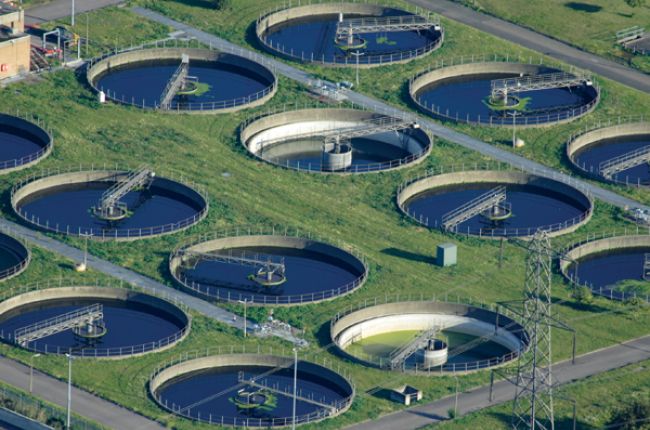
Most of the water that is used in homes and businesses is put into either municipal sewers or home septic systems. Most of that water is polluted to some extent, because it comes from clothes washing, bathing, and toilets. In earlier times, sewage was put directly into the ground, into rivers, or into the ocean, without any treatment. As population has grown, however, the need for wastewater treatment has increased as well.
Home septic systems consist of a large underground tank, where anaerobic bacteria (those that do not need oxygen) gradually break down most of the solids. The remaining liquid waste flows out into what is called a leach field, where the water flows out from porous underground pipes into the ground. This water still contains pollutants and harmful microorganisms. Some of these are removed as the water flows through soil and rock, but in many places they reach groundwater supplies and add to problems of water pollution.
Municipal sewage is treated in special wastewater treatment plants. There are several common methods of treatment. Also, the level of treatment varies greatly.
- In primary treatment, all that is done is to put the water in large tanks or ponds to let the solid material, called sludge, either float to the surface or settle to the bottom. The water is then usually chlorinated, and the sludge is treated and disposed of in various ways.
- Most wastewater undergoes secondary treatment as well as primary treatment. The most common method is to sprinkle or trickle the water over a bed of sand or gravel. As the water filters downward, it is put into contact with oxygen and microorganisms, which work together to break down the organic matter in the water. The water is then usually chlorinated before it is released into the environment.
- In a few places, the water undergoes tertiary treatment, which involves a variety of processes to purify the water even further. After tertiary treatment, the water can be pure enough to drink!





